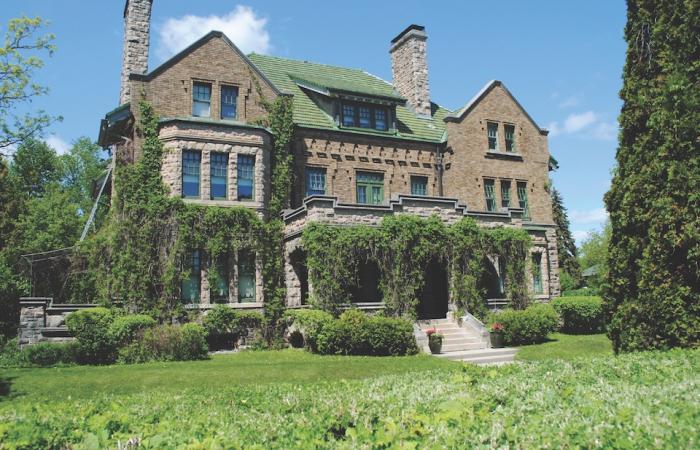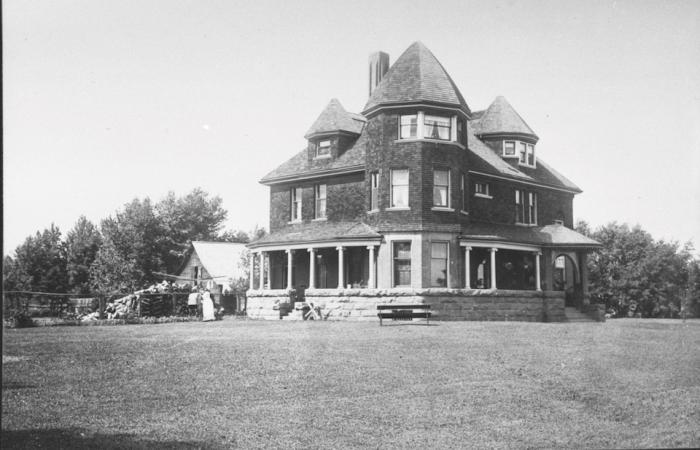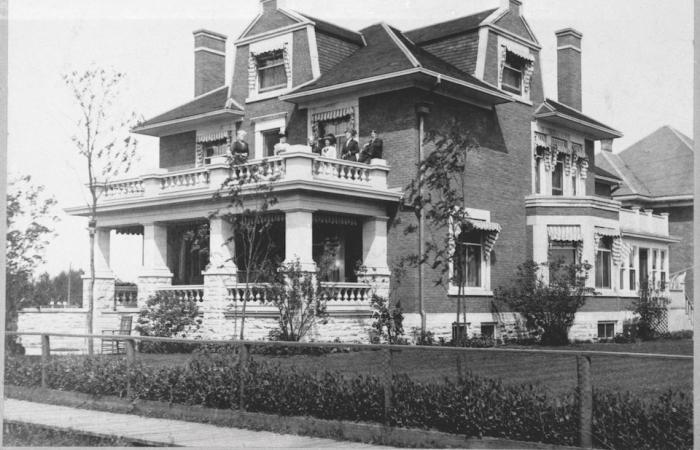The people who opened up the North West shared a common love for vast and wild country. They were pioneers, inventors, mining engineers, geologists, surveyors, world travellers, politicians and business men and women. All of them were persons of vision who saw an opportunity and seized it. As with many things about the growth of Thunder Bay, they are rooted in mining, forestry, railway and shipping.
Thomas Marks
Thomas Marks arrived in Port Arthur in 1849 and quickly became a prominent figure. He and his brother successfully established a business at Bruce Mines, partnered with Peter McKellar in his mining operations and contracted to build road beds for the CPR. Marks was president of three railways and his ship, “The Kakabeka”, was the first one to be registered at Port Arthur. He also was instrumental in starting the first grain elevator here and his Forwarding and Electric Company provided the power for the Port Arthur Light and Electricity Company. In recognition of his leadership, Thomas Marks was elected the first mayor of the Town of Port Arthur when it incorporated in 1884. Marks resided in a house built in 1895 at 125 North Algoma Street until his death in 1900.
James Whalen
There were only a handful of men in Port Arthur at that time who could rival the accomplishments of Thomas Marks. One of them was James Whalen. In 1875, Whalen came to Port Arthur when he was six years old. Tragically, when his father drowned, James, being the eldest son, had to provide for his family. When he finished public school, he started logging and constructed railways. His far-sightedness established him as a genius. Whalen dreamt of making Port Arthur into the “Chicago of the North” and devoted many years of his life to that pursuit. He is said to have put the PORT in Port Arthur founding the Great Lakes Dredging Company and establishing the shipping industry in Thunder Bay. His most prominent achievement is the Whalen Building, the eight story brick and concrete structure on North Cumberland Street that is now home to Thunder Bay Hydro. Whalen constructed it in 1914 for $555,000 fashioning it after the Chicago skyscraper design of the day. It remains Thunder Bay’s first and only skyscraper. At the height of his career, James Whalen was worth $10 million. Aside from his business dealings, James Whalen was a devoted family man. He married Laurel Conmee, daughter of MP James Conmee, and together they had five children. He purchased the Marks house on 125 N. Algoma St. in 1902 and the Whalen family lived there sharing the property with chickens, cows and horses. James Whalen died June 4, 1929 and the house was sold to the Sisters of St. Joseph in 1930 who used it as a school. It became part of HMSC Griffon in 1943.
James Murphy
James Murphy was born in West Liberty, Iowa in 1863 and moved to Fort William in 1884. For 44 years he helped build the town. Murphy worked as a fuel contractor from 1887 to 1903. The CPR needed coal for its locomotives, so he formed his own business, the James Murphy Coal Company, and built an empire supplying coal to the CPR. Apart from his business, James Murphy played a leading role in Fort William’s municipal affairs. He was chairman of the Water and Light Commission in 1897. Murphy served on town council and was mayor of Fort William in 1907 and 1908. James Murphy was also president of the company that published the Times Journal until he died in 1928. Following his death, Murphy’s sons maintained the business.
James Murphy constructed an imposing mansion for his family at 431 Selkirk Street over a five year period from 1914 to 1919. During the spring of 1946, the house was subdivided into five apartments with the Murphy family residing on the first floor. In 1986, it was sold to Bruno Valente, The house is still known as the Murphy Mansion and earned the distinction of becoming the first residential building in Thunder Bay to be designated as historically and architecturally significant by the Local Architectural Conservation Committee on July 24, 1985.
Peter McKellar
Peter McKellar was called the “Renaissance Man.” He was a surveyor, geologist, mining engineer, historian and inventor. Peter and his brothers John and Donald discovered and developed a number of mineral deposits in Northwestern Ontario including the Thunder Bay Silver Mine, the Silver Lake Iron deposits and the Enterprise Copper Mines at Black Bay. In 1884, he found iron ore deposits near Atikokan. Peter McKellar invented a rock crusher powered by a rotary engine until he co-edited Fort William’s first newspaper, “The Perambulator” and founded the Thunder Bay Historical Society. The written word fascinated him, and he had a great love for learning. On his travels, Peter McKellar was well respected for the integrity with which he conducted his business and personal affairs. He made Northwestern Ontario known to the rest of Canada and the world. For sixty years, Peter McKellar was integral to the growth of the Lakehead until died in 1929 at the age of 92. The McKellar family always had an intimate clan-like closeness for each other worthy of their Scottish heritage. This keen sense of familial cohesiveness extended to the community in which they lived, and it
is this sense of community for which Peter and his family are most remembered.
These are just four of the pillars upon which our city was built. Despite the demands of their professions, the founding citizens of Thunder Bay were philanthropists and community-minded people at heart with a genuine compassion for everyone around them. They served on town councils, served as board members of organizations and volunteered at social functions. The Whalens were said to have anonymously delivered turkeys to families in need on Christmas Eve.
Part of the Legacy
Laurie Abthorpe, Heritage Researcher for the City of Thunder Bay wrote, “The historic homes of Thunder Bay are part of the legacy of community members who contributed greatly to our city.”
Apart from James Whalen’s skyscraper, the businesses and industries started and owned by the founding families of Thunder Bay, have either changed or disappeared. But the homes they lived in still stand. These houses remain as monuments to give witness to their fortitude and foresight. They are for us reminders of the storied past of our city of Thunder Bay.







